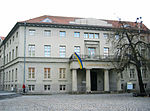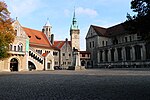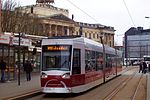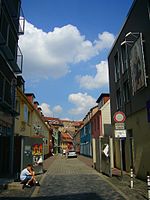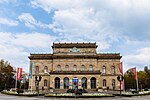Brunswick Cathedral
12th-century churches in GermanyBurial sites of the BrunonidsCaroline of BrunswickChurches completed in 1195Churches in Braunschweig ... and 7 more
Former collegiate churchesHistory of BrunswickLutheran cathedrals in GermanyLutheran churches converted from Roman CatholicismLutheran churches in Lower SaxonyOtto IV, Holy Roman EmperorRomanesque architecture in Germany

Brunswick Cathedral (German: Dom St. Blasii (et Johannis), lit. in English: Collegiate Church of Ss. Blaise and John the Baptist) is a large Lutheran church in the City of Braunschweig (Brunswick), Germany. The church is termed Dom, in German a synecdoche - pars pro toto - used for cathedrals and collegiate churches alike, and much like the Italian duomo. It is currently owned and used by a congregation of the Evangelical Lutheran State Church of Brunswick.
Excerpt from the Wikipedia article Brunswick Cathedral (License: CC BY-SA 3.0, Authors, Images).Brunswick Cathedral
Burgplatz, Brunswick Mitte
Geographical coordinates (GPS) Address External links Nearby Places Show on map
Geographical coordinates (GPS)
| Latitude | Longitude |
|---|---|
| N 52.264166666667 ° | E 10.524166666667 ° |
Address
Domkirche St. Blasii
Burgplatz 7
38100 Brunswick, Mitte
Lower Saxony, Germany
Open on Google Maps


